Kia ora and welcome to an update from the Transmission Gully Ventia team.
has now been open for seven months and the normal traffic flow continues to be steady with around 23,000 vehicles per day. It is also remarkable to think we have now seen five million vehicles use the motorway since opening!
With Wellington experiencing its wettest winter on record, there were an unprecedented number of weather-related issues facing motorists around the region.
Transmission Gully was not immune to the weather and slope stabilisation near Te Ara a Toa bridge was completed following proactive monitoring. The closure of SH59 for just under four weeks due to a slip near Pukerua Bay saw the number of vehicles using Transmission Gully increase. During this time, traffic continued to flow smoothly with very little impact on commuter journey times.
Road closures throughout the wider region kept the Transmission Gully Transport Operations Centre staff very busy as traffic was diverted onto the motorway. Working closely with the Wellington Transport Operations Centre, commuters were kept informed of the fastest and safest route to their destinations.
On 1 October, a truck and trailer unit caught on fire forcing the closure of one southbound lane for most of the day, as the fire was brought under control, the trailer unit was dismantled for transport, and the site was cleaned up. This was a big day for the Ventia incident response team, working closely with the New Zealand Police and Fire and Emergency New Zealand (FENZ).
In this newsletter, we reflect on the impacts of the wettest winter on record, what to expect when driving on a managed motorway, and preview the planned works for Transmission Gully this summer.
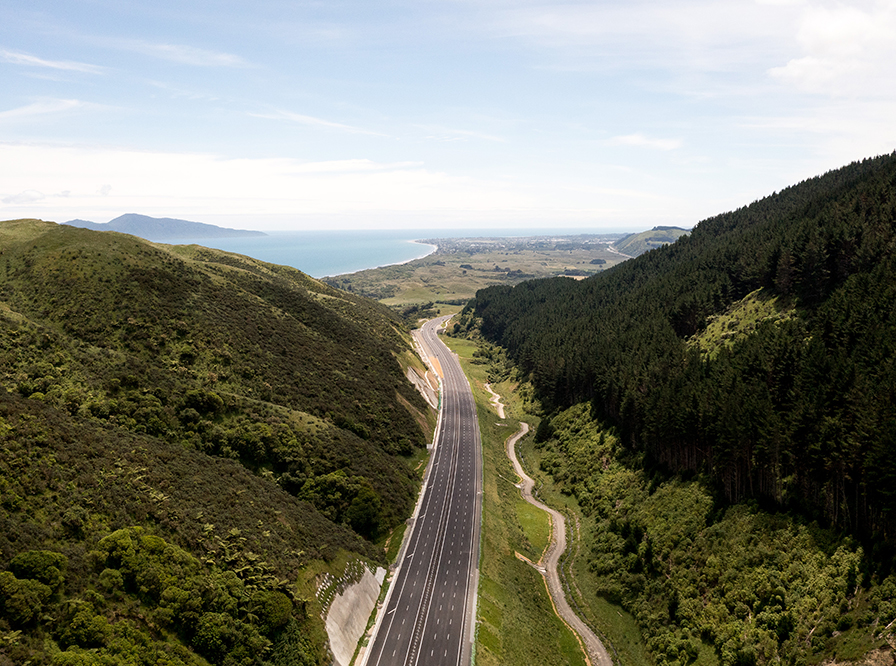
Did you know Wellington had its wettest winter on record this year? Commuters across the region felt the impact of the weather, with disruptions to train timetables as well as slips on SH59 and SH58 forcing some road closures.
Although Transmission Gully also experienced severe weather conditions, including its first taste of light snowfall*, the motorway remained open, absorbing the extra diverted traffic. The decision to expedite and open Transmission Gully early has required commuters to work around ongoing building works during the early opening phase, but this is weighed against the ability to switch to an alternative route when extreme weather events force the closure of roads across the region.
*Video on Youtube: Sleety showers and snowfall on Transmission Gully in Kapiti(external link)
During winter, detours necessitated by the slips saw some commuters navigating Transmission Gully for the first time. It was an important time to remind commuters to plan their journey. The Waka Kotahi Journey Planner and interchange maps and videos on the Transmission Gully website are great resources to help with this.
Journey Planner(external link)
In extreme weather conditions, motorists will get advance warnings of weather affecting driving conditions through electronic signs, radio, and Waka Kotahi social media updates.
You can find some useful information on how to drive safely in bad weather conditions on the Waka Kotahi website.
How to drive safely in bad weather conditions
As Transmission Gully is a managed motorway, you will notice more active monitoring and incident support. Here are three things you should know about driving on Transmission Gully that will make your experience a bit different to other roads.
1. The motorway is patrolled – Incident Response trucks provide safe assistance
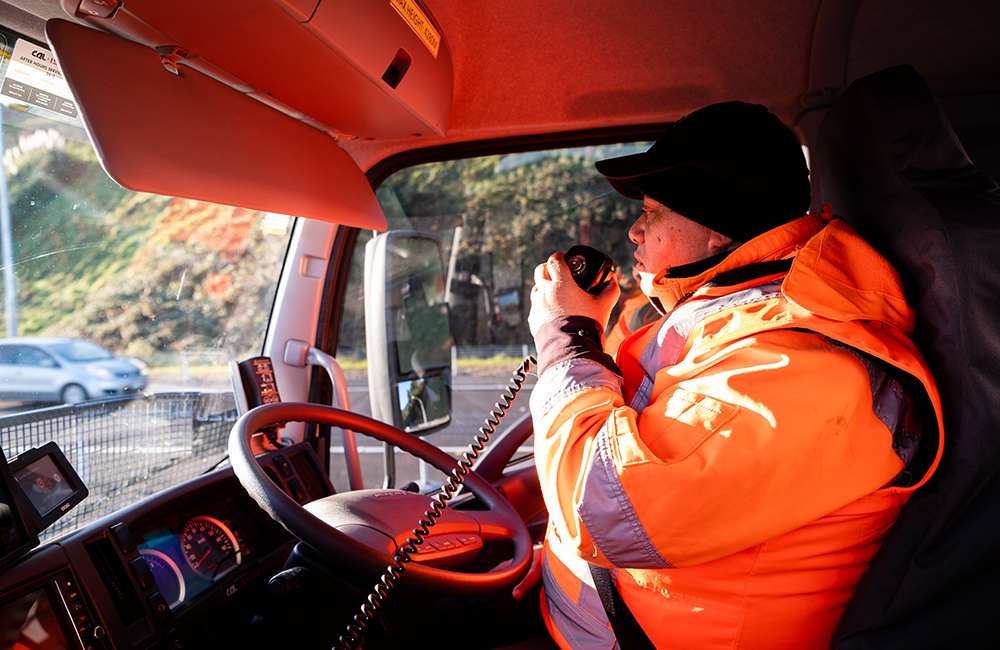
The Ventia Incident Response team has the training and equipment to respond to incidents safely.
Transmission Gully motorway is patrolled, meaning travellers should not stop to help other vehicles. If you’ve driven the motorway, you may have noticed the Incident Response (IR) trucks stopped on the shoulder of the road helping vehicles that need assistance. The IR trucks have a barrier that can be lowered when they are stopped, which is designed to safely absorb the impact of a vehicle travelling at 100km/h. When parked behind a vehicle the IR trucks provide a safe zone to assist, protecting the occupants of the vehicle from live traffic.
2. The motorway is monitored 24/7
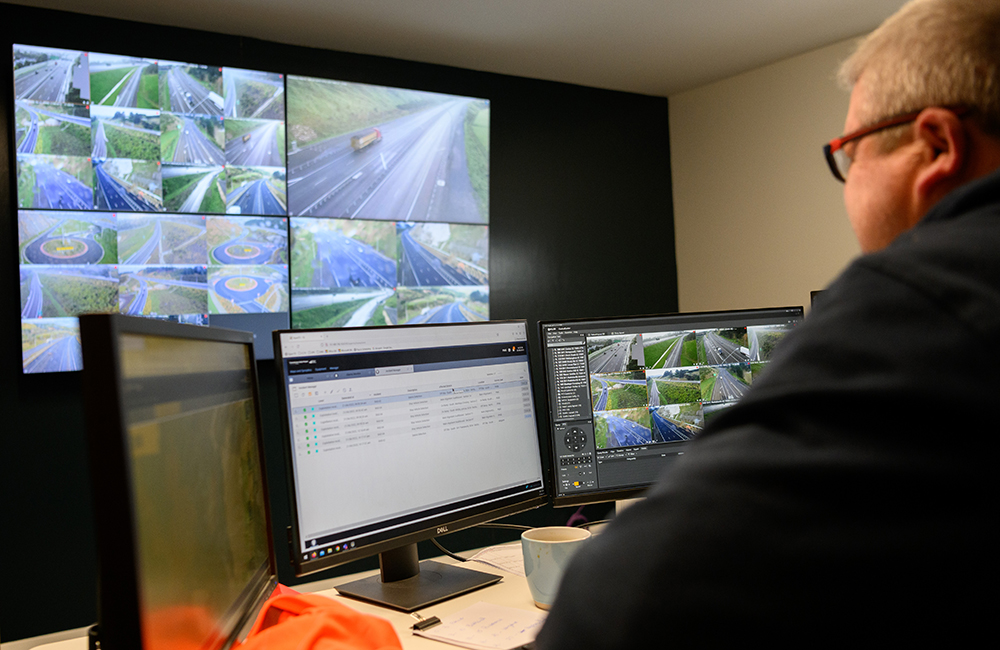
The Ventia Traffic Operations Centre and Incident Response trucks monitor Transmission Gully 24/7.
If an emergency happens and you need to stop, you will be spotted by either the IR patrol trucks or the Transmission Gully Transport Operations Centre.
The team use an Intelligent Transport System (ITS) consisting of radars and cameras that can pick up a vehicle stopped, reversing, or driving counter to traffic flow, as well as debris on the motorway. When a problem is detected, our team is sent to the site to make sure everyone is kept safe and out of harm’s way. We also coordinate responses with emergency services if needed.
If you break down, safely pull your car over onto the shoulder as far as possible and stay in your car if safe to do so (don’t get out of your car to find cell phone reception) and leave room for the IR truck to stop behind you, space permitting. If it is an emergency and you are able to, please call 111.
3. Ventia are on call to provide incident response
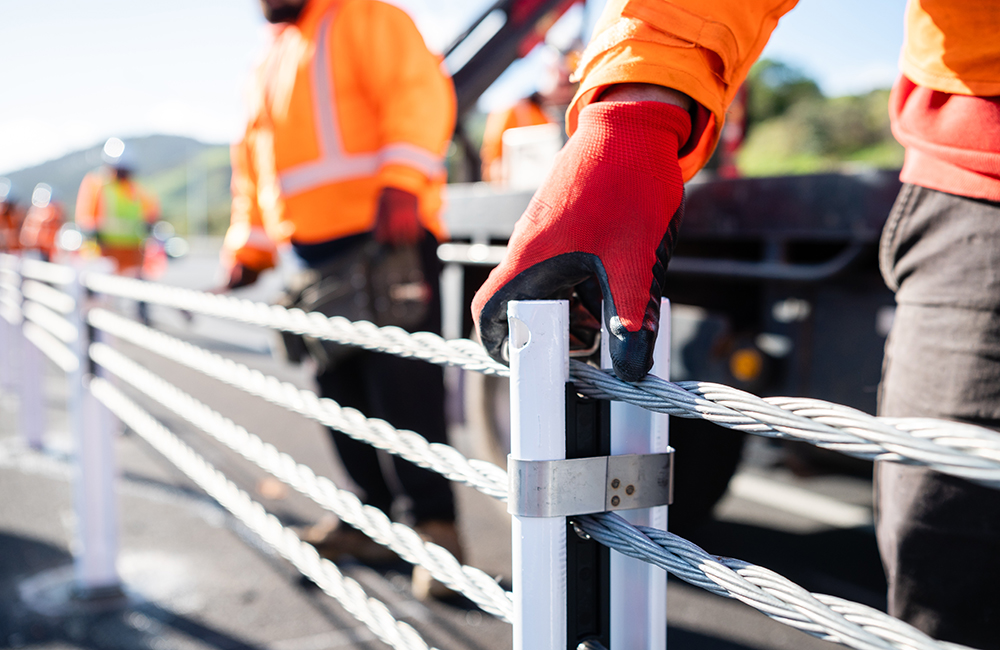
Following a crash, the Ventia team can be seen out on the road repairing damaged barriers and signage.
As part of the Public Private Partnership, Ventia is contracted for the next 25 years to provide safe motorway operation, including incident support. As Transmission Gully motorway is actively monitored, the Ventia incident response team are typically the first on the scene of a crash or incident and will alert emergency services if necessary. The Ventia incident responders are trained in Coordinated Incident Management System (CIMS) as well as first aid. The CIMS system ensures that when Ventia incident responders are working alongside police, ambulance and FENZ crews in responding to an incident, the roles and responsibilities are clearly defined.
Planned works are expected to continue into 2023 to fully complete the Transmission Gully motorway, with the next phase of the road builder’s works programme starting soon.
The Transmission Gully project has been completed in stages in order to expedite the opening of the motorway to the public, while also allowing for work on the state highway network that otherwise would have caused significant disruptions for motorists without an alternative route.
Over summer, you will see CPB Contractors and HEB Construction (CPB HEB JV) out and about completing necessary construction and maintenance both on and off the motorway.
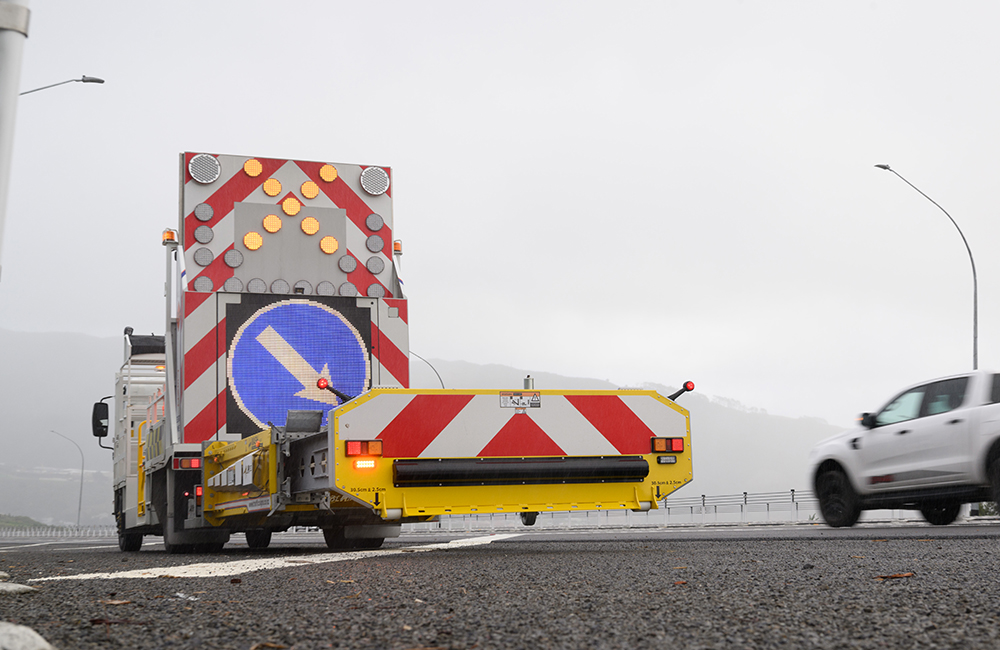
The works programme for this summer involves drainage works, kerb and channel works, pathways, finishing link roads, signage, lighting, planting, and a short section of resurfacing on the main carriageway.
On new chipseal roads, some flushing of bitumen through the chip can sometimes occur, especially under hot summer conditions and heavy traffic loads. Our regular monitoring of the road surface has identified sections where flushing is more likely to occur. Pre-emptive repairs are being made over the coming weeks to these sections to avoid affecting summer holiday traffic.
An immediate response team are on hand to apply water to cool the surface or spread stone chips onto affected areas. Motorists may see CPB HEB JV making these repairs and adding small amounts of new stone chip to the road. There may also be lane closures at night in some locations and some temporary speed limits following these works due to loose stone chip. For your safety and the safety of other road users, please follow all traffic and speed signage.
Plans are also being finalised for surfacing work on a short section of the northbound lanes, just north of Te Ara a Toa. Pavement quality on Transmission Gully motorway is constantly monitored, and this early intervention work will ensure the expected standard of quality is achieved when permanent rehabilitation work is completed in the New Year. The works will be planned to minimise disruption to motorists.
Some of the most visible works will be seen around SH58 and Lanes Flat as the final pavement between the Pāuatahanui roundabout and Bradey Rd intersection is laid, and CPB HEB JV offices are removed to allow a new local road connection to be built.
Cyclists and local residents will also be keen to know that the completion of the new connecting road between Paekākāriki and Queen Elizabeth Park at Mackays Crossing is planned to start in late summer 2023.
For the latest planned works information, please visit the Transmission Gully website.
As the motorway operator, Ventia works closely with the builder to manage work in a safe manner that minimises any disruption for travellers. To plan your journey and stay informed, please:
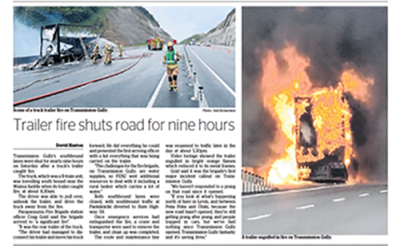 Article published in Kapiti News.
Article published in Kapiti News.Early on 1 October, a truck and trailer unit caught fire while driving on Transmission Gully motorway. As covered in the Kapiti News (see right), the driver was able to safely pull over into a maintenance bay and unhitch the trailer.
It took nine hours and a massive team effort to extinguish the fire, then deconstruct and remove the trailer. The Ventia Network Manager explains:
“Once the fire was out and made safe enough for recovery to begin, we had to prepare the burnt-out trailer for transportation. The trailer was carefully deconstructed along with its charred contents and placed into two tipper trucks for removal. The remaining chassis was lifted by crane onto a transporter to be removed from the site. It was a coordinated team effort between Ventia, the New Zealand Police and FENZ.”
Fire and Emergency New Zealand’s Brett Lockyer, Response Capability Manager for the Wellington Fire District, says the crews all worked well with each other, considering it was the first big incident on Transmission Gully motorway:
“Ventia provides an immediate response on Transmission Gully motorway, with a principal focus on safety, both in terms of incident management and the public using the motorway.The Ventia Network Manager on site was an integral part of the Incident Management Team and coordinated road closures and traffic management. Ventia was also actively involved in the decision on when the incident should be handed over from FENZ to Police”.
If you have any questions or concerns, please contact us at info.tg@ventia.com. If you have an urgent matter, please call 0800 TGINFO (0800 844 636).
You can also:
This newsletter was brought to you by Ventia.
If you no longer wish to receive this newsletter, unsubscribe(external link)